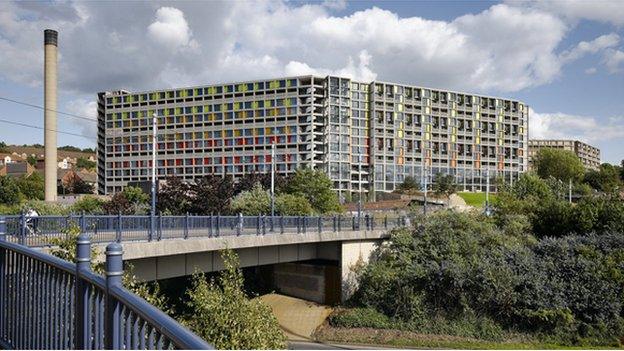The Sheffield estate where the garage has become an art gallery
- Published
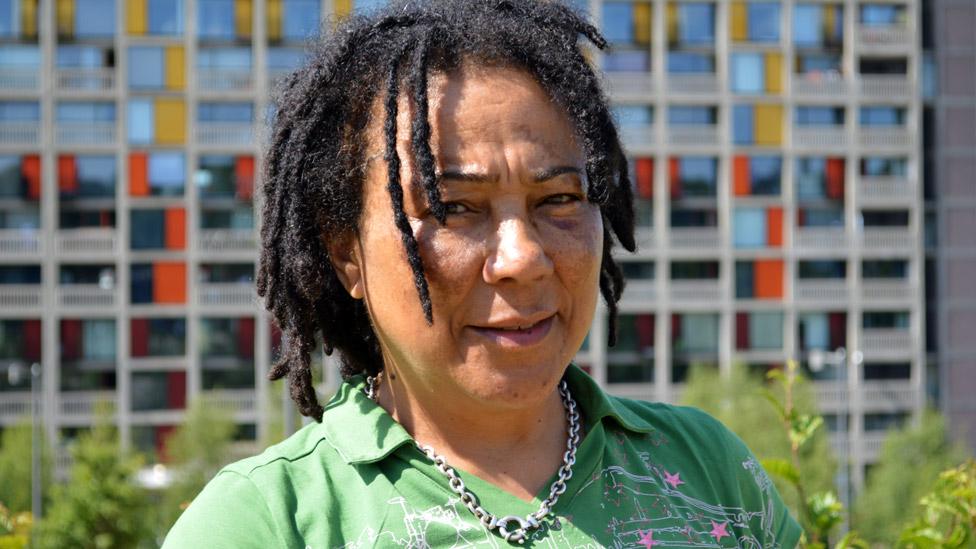
Joanne Marsden was born in one of the Park Hill flats, and still lives on the site
When Joanne Marsden was a child, the low concrete garage block that's surrounded by high-rise flats on her estate was a place to rollerblade on the roof after tea and avoid after dark.
Marsden was born in one of the Park Hill flats in 1965 and still lives on the estate that dominates Sheffield's skyline.
Children used to play on top of the garage, she recalls. "We used to climb up - there were two holes in the ceiling.
"You could climb up onto the roof. We used to play tiggy on there and we used to rollerblade on top.
"It were right scary when it turned dark. If one of the garages were empty and the door were left open, you were right scared of people shoving you in and shutting the door because there were no lights in there."
This week, when she goes back, she'll see its transformation.
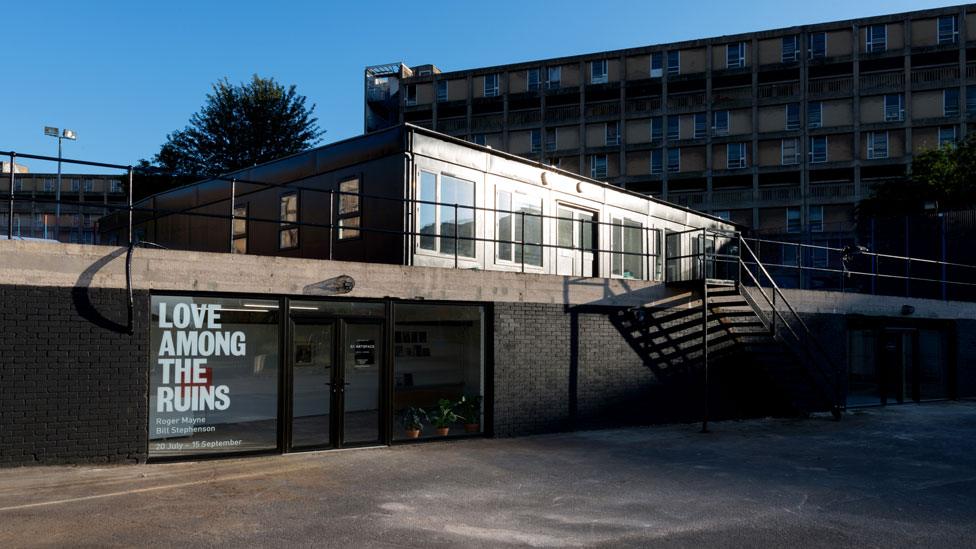
Instead of dark garages and holes in the roof, it now has white walls, light-filled artists' studios and a small shop by the front door.
The garage block has been converted into the city's newest art gallery by S1 Artspace, which has relocated from the city centre.
Marsden is looking forward to seeing its new life. "I like art so I'll probably nip down and have a nosey."
The garage-turned-gallery opens on Friday with an exhibition of photographs taken by Roger Mayne soon after Park Hill opened in 1961 alongside photos of the neighbouring Hyde Park estate taken by Bill Stephenson in 1988, just before the block was knocked down.
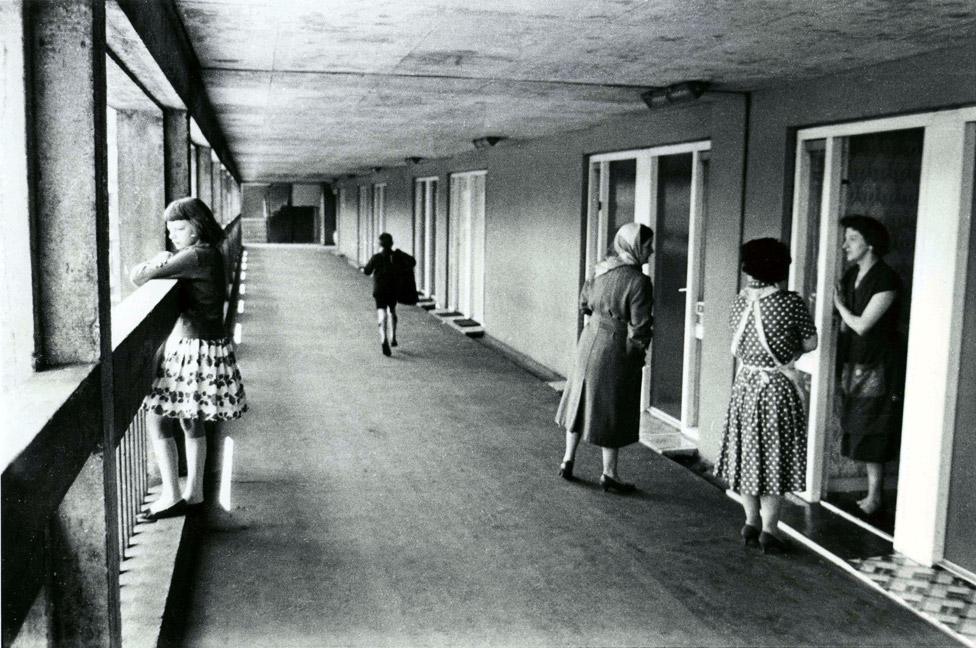
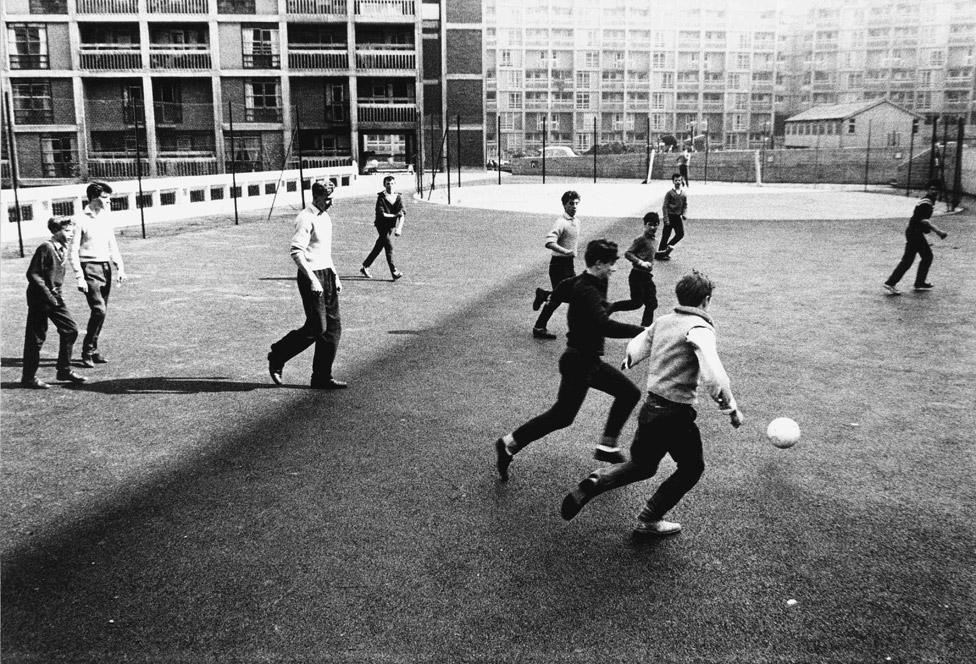
Roger Mayne took photos of Park Hill when it opened in 1961
Park Hill was built to an idealistic blueprint of "streets in the sky", but was notorious for drugs and crime by the 1980s.
However, English Heritage gave it Grade II-listed status in 1997, and it's now in the middle of a protracted renovation scheme by developer Urban Splash that has made one half of the estate bright and desirable, and has left the other half empty and crumbling, for now.
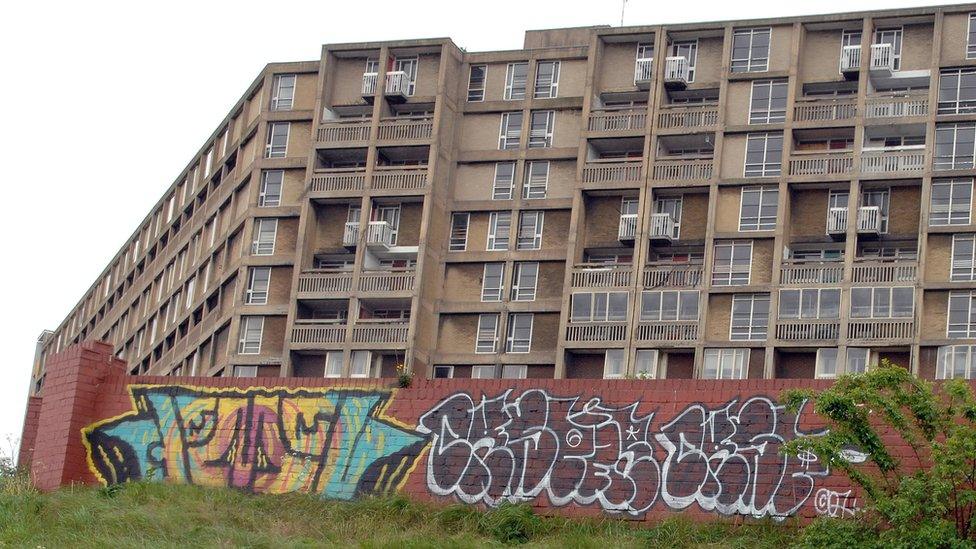
Part of Park Hill has been renovated, with more to be done
The renovated part is now home to young professionals and creative businesses including Warp Films, the company behind productions like This Is England.
The rest of Park Hill is due to be renovated and repopulated in the coming years. When that happens, a brand new art gallery with a reported £21m budget will be built as an extension to one of the existing high-rise blocks, replacing the garage.
That's expected to open in around 2024 and will provide four times as much gallery space, with more studios and flats for visiting artists to stay in. The National Trust will also fit one flat out in original 1960s decor.
S1 Artspace curator Laura Clarke says the old garage will serve them well until then.
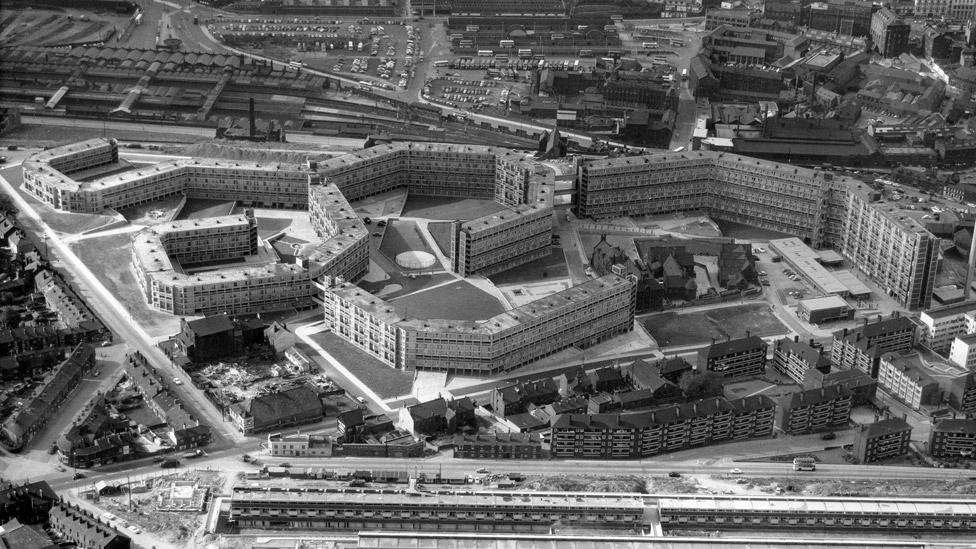
Park Hill's "streets in the sky" were intended as a revolutionary replacement for slum housing
"It was earmarked for demolition so it was a great opportunity for us," she says. "It's been an interesting challenge to redevelop a garage block into a gallery space.
"The amazing thing is, architecturally it still has a lot of the hallmark qualities of Park Hill - things like the concrete beams and the way it nestles into the landscape as it follows the topography of the hillside.
"The renovation of it has been very respectful to the original building - we haven't pushed and pulled it around too much."

The redeveloped parts of Park Hill have been given a colourful makeover
Five generations of Joanne Marsden's family have lived on Park Hill - from her great-grandmother to her own children.
It was a good place to grow up, she says. "When we were younger it had an amazing reputation. This were a prime spot.
"It felt more of a community growing up, whereas now it feels a bit more middle class. It reminds me more of London to be honest."
The neighbouring block that Bill Stephenson photographed in 1988 was knocked down soon after.
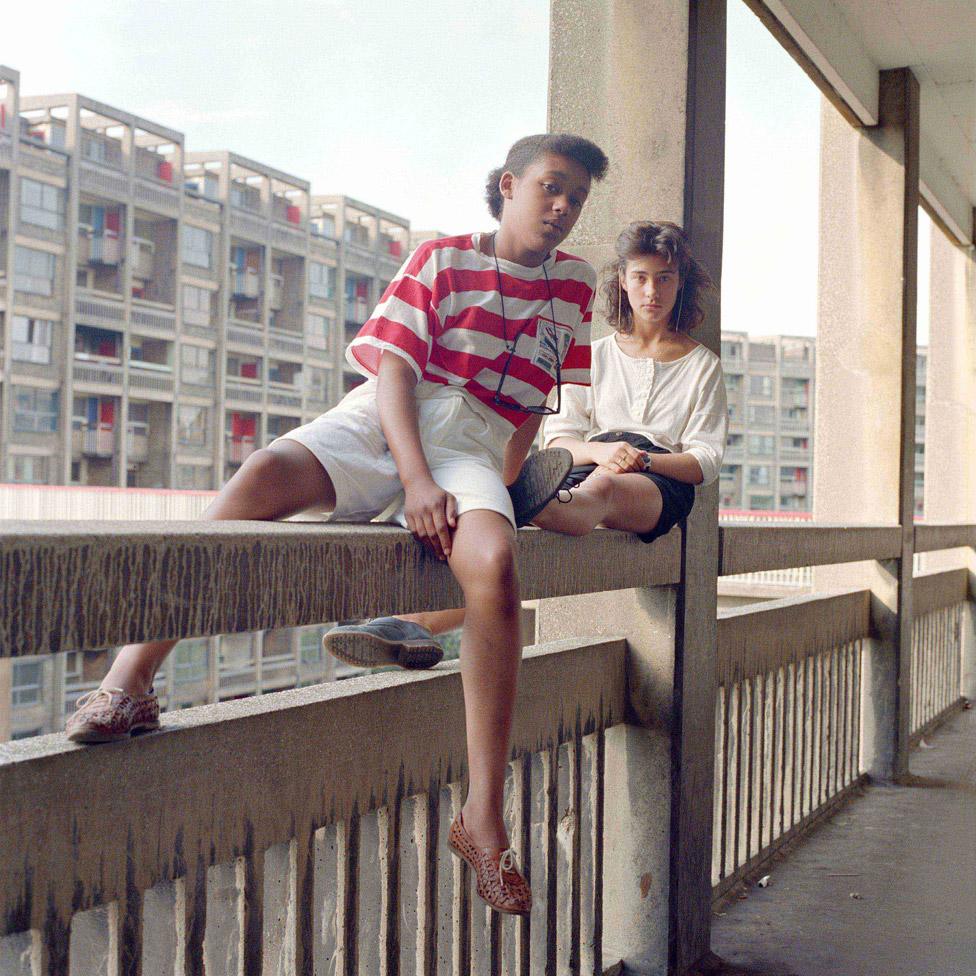
Bill Stephenson: Donna and Carmen sit on an unguarded fourth storey concrete parapet. Hyde Park Flats, Sheffield, 1988
"I was prepared to meet people who wanted the place to be blown up and who thought it was the worst place they ever lived," Stephenson says.
"But far from it - I found a community of people who didn't want to leave the flats, who loved living there, but were extremely disappointed with the council for allowing the building to be run down.
"It was a great atmosphere up there really. And despite that brutalist architecture and raw concrete, it was a place that people loved and had made their home."
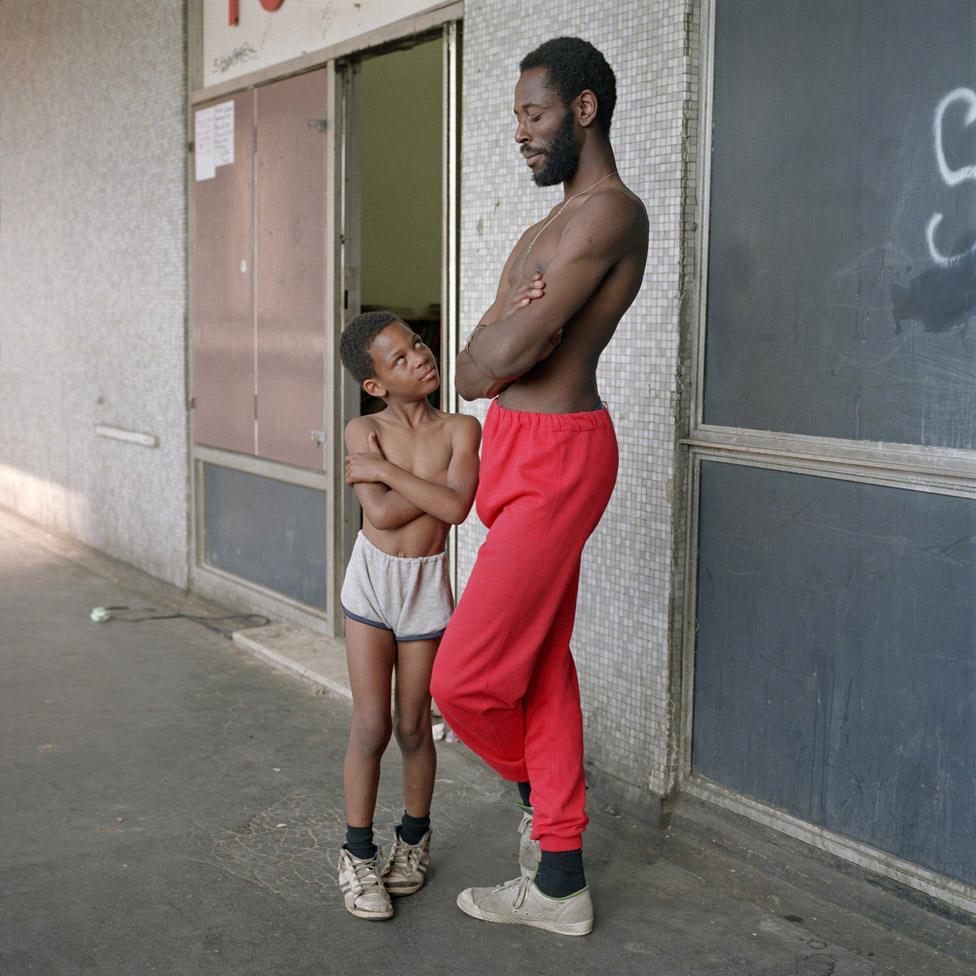
Bill Stephenson: Tony the Ton and Martin age eight, outside the Pop In Centre. Hyde Park Flats, Sheffield, 1988
The renovated Park Hill flats are now highly desirable, helped by the presence of the creative businesses and a trendy cafe, and now the gallery.
"I suppose you could use the word gentrification couldn't you?" Stephenson says.
"The fantastic thing about buildings and communities is they change. I asked if there were any flats were for sale and they get snapped up straight away.
"I did notice a lot of interior designers have been at the flats, so they are looking for that '60s feel with '60s furniture.
"The nostalgia and the hardships of living up there are becoming quite trendy again."

Follow us on Facebook, external, on Twitter @BBCNewsEnts, external, or on Instagram at bbcnewsents, external. If you have a story suggestion email entertainment.news@bbc.co.uk.
- Published7 November 2017
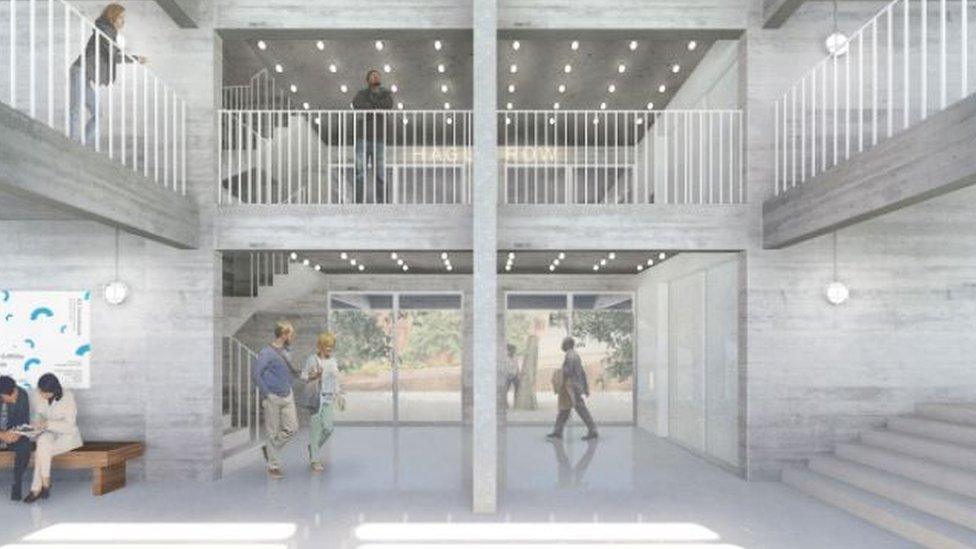
- Published6 October 2016
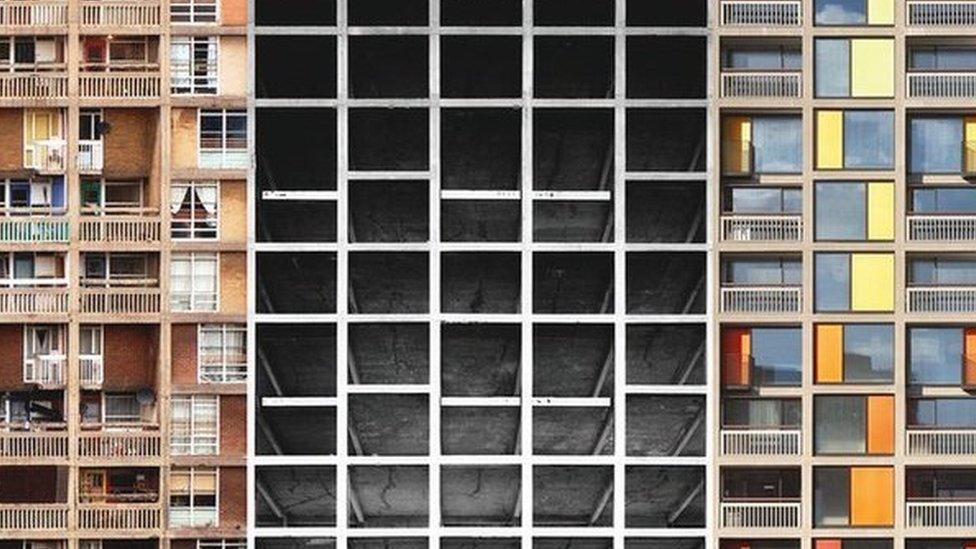
- Published15 August 2016
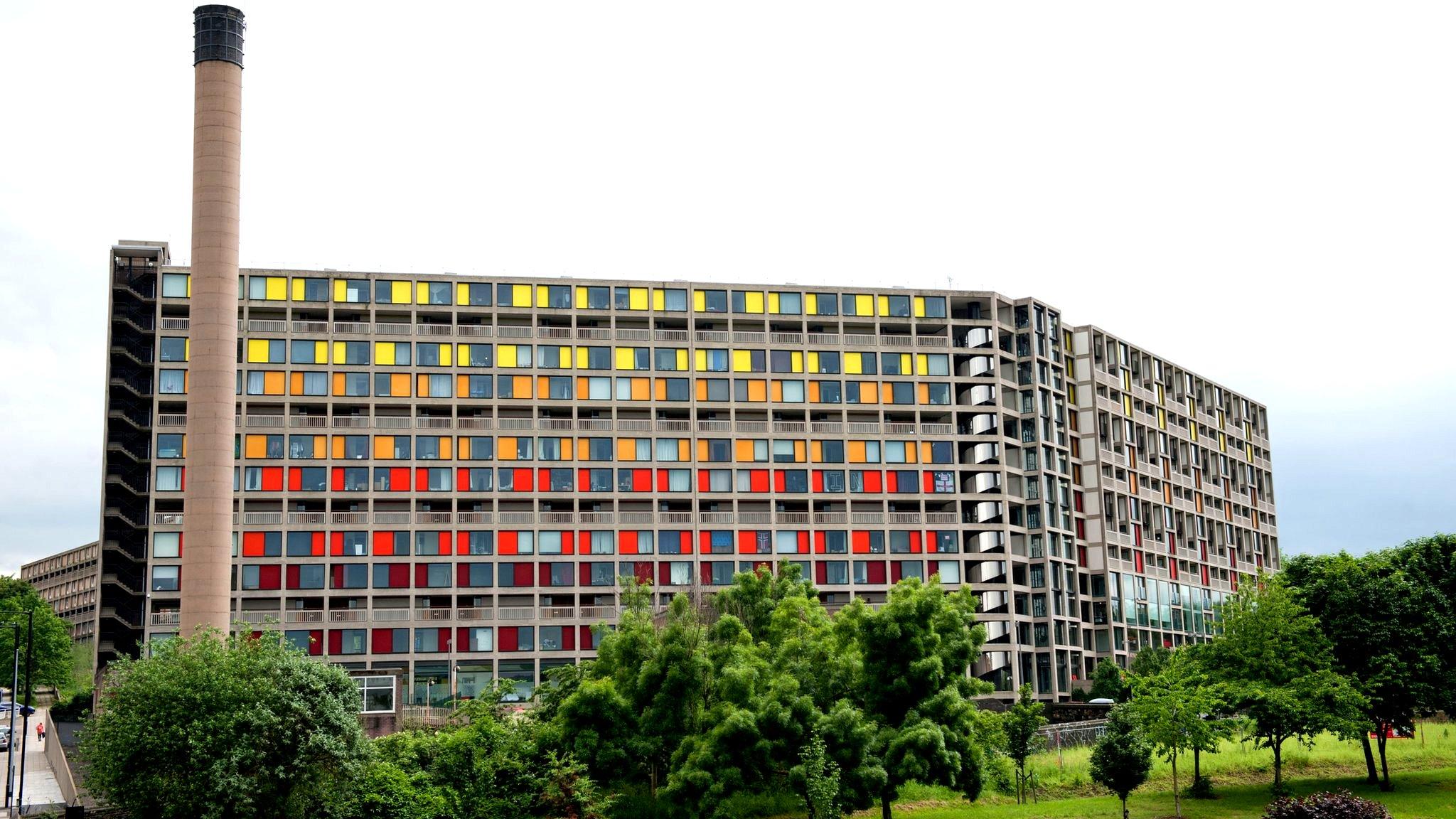
- Published19 July 2013
